Select Language
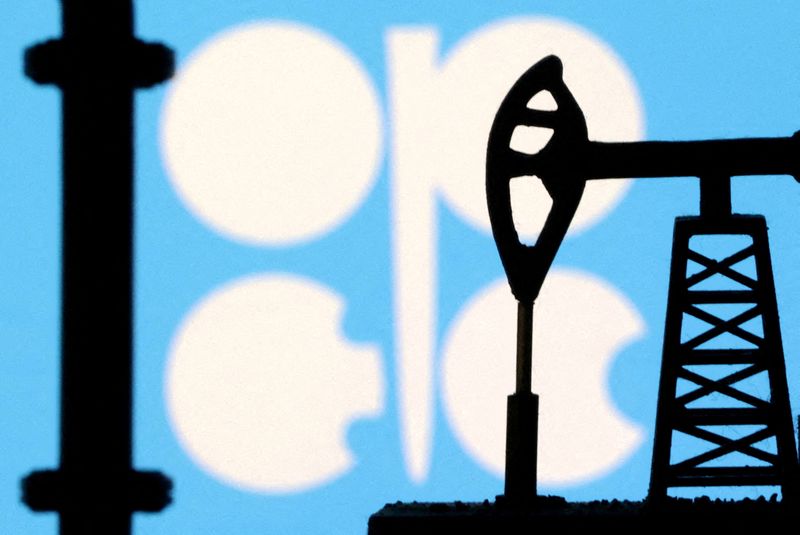
By Alex Lawler, Olesya Astakhova, Maha El Dahan and Ahmad Ghaddar
LONDON/MOSCOW/DUBAI (Reuters) -OPEC+ oil producers on Thursday agreed to voluntary output cuts totalling about 2.2 million barrels per day (bpd) for early next year led by Saudi Arabia rolling over its current voluntary cut.
Benchmark global oil prices settled down around 2% [O/R], in part because the reductions were voluntary and because of investor expectation ahead of the meeting that additional supply cuts might be deeper.
Saudi Arabia, Russia and other members of OPEC+, who pump more than 40% of the world's oil, met online on Thursday to discuss supply policy.
"The market reaction implies disbelief in the full efficacy of the cuts," JP Morgan analyst Christyan Malek said.
"However, setting a new framework for each member to deliver on its cut reflects the degree of trust and cohesion among the members; case in point, the fact Brazil is joining is testament to the strength in numbers for OPEC+."
The group discussed 2024 output amid forecasts the market faces a potential surplus and as a 1 million barrel per day (bpd) cut by Saudi Arabia was set to end next month.
OPEC+'s output of some 43 million bpd already reflects cuts of about 5 million bpd aimed at supporting prices and stabilising the market.
The total curbs amount to 2.2 million bpd from eight producers, OPEC said in a statement after the meeting. Included in this figure is an extension of the Saudi and Russian voluntary cuts of 1.3 million bpd.
The 900,000 bpd of additional cuts pledged on Thursday, includes 200,000 bpd of fuel export reductions from Russia, with the rest divided among six members.
Russian Deputy Prime Minister Alexander Novak said Russia's voluntary cut would include crude and products.
The UAE said it had agreed to cut output by 163,000 bpd while Iraq said it would cut an extra 220,000 bpd in the first quarter.
Saudi Arabia, Russia, the UAE, Iraq, Kuwait, Kazakhstan and Algeria were among producers who said cuts will be unwound gradually after the first quarter, market conditions permitting.
OPEC+ is focused on lower output with prices down from near $98 in late September and concerns brewing over weaker economic growth in 2024 and expectations of a supply surplus.
The International Energy Agency (IEA) this month forecast a slowdown in 2024 demand growth as "the last phase of the pandemic economic rebound dissipates and as advancing energy efficiency gains, expanding electric vehicle fleets and structural factors reassert themselves."
OPEC+ also invited Brazil, a top 10 producer, to become a member of the group. The country's energy minister said it hoped to join in January.
The OPEC+ meeting coincides with the opening of the United Nations' COP28 climate summit being hosted by OPEC member the United Arab Emirates.
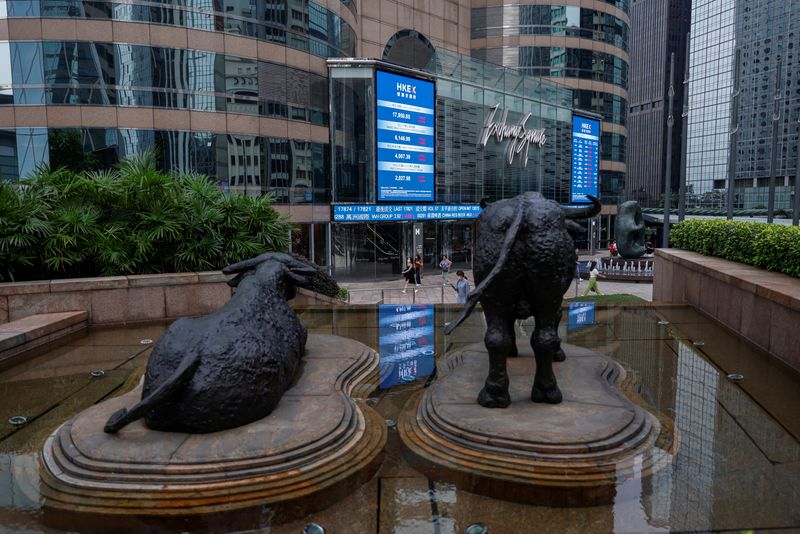
By Stella Qiu
SYDNEY (Reuters) - Asian sharemarkets started the last month of the year on a cautious note after recent strong gains, though growing expectations Europe and the U.S. are poised to cut rates should help ease pressure on local currencies and central banks.
Global oil prices extended losses after a drop of more than 2% overnight as voluntary oil output cuts by OPEC+ producers for the first quarter next year fell short of market expectations. [O/R]
MSCI's broadest index of Asia-Pacific shares outside Japan fell 0.5% after a surge of 7.3% last month, the most since January. Japan's Nikkei was flat, having also jumped 8.5% in November in the best month in three years.
Chinese bluechips dropped 0.6% and Hong Kong's Hang Seng index fell 0.4%.
"Our sense is that quite a lot of the good news is already in the price. A little bit of profit-taking and rebalancing have probably played in the month-end, obscuring the messaging we typically get from the price action," said Rodrigo Catril, a senior FX strategist at the National Australia Bank (OTC:NABZY).
Regional surveys of purchasing managers showed mixed results in November. Japan's factory activity shrank at the fastest pace in nine months, South Korea's factory activity steadied and China's manufacturing industry returned to expansion, based on a private survey.
Overnight, data showed that both U.S. and European inflation are cooling as desired. The Federal Reserve's preferred gauge of inflation - the personal consumption expenditures (PCE) price index - stood unchanged for October, while consumer spending also pulled back.
The major surprise was with euro zone inflation, which missed expectations by a large margin, triggering a slide in the euro and prompting markets to price in rate cuts of about 110 basis points next year, commencing as early as April.
Traders are now waiting for Fed Chair Jerome Powell's Q&A appearance on Friday, with bulls betting the central bank chief will accommodate their early and aggressive U.S. policy easing bets for next year. Fed funds futures imply rate cuts of 115 basis points.
"We suspect this will be a very tightly choreographed session and will stick to the pre-Waller script of caution when it comes to further hikes but with no hint of easing," said Robert Carnell, regional head of research, Asia-Pacific, at ING.
Fed Governor Christopher Waller, deemed a hawk, this week hinted at lower interest rates in the months ahead if inflation continued to ease.
Declining interest rates in Europe and the U.S. would be good news for Asia, greatly easing the pressure on emerging market currencies and allowing room for Asian central banks to ease monetary policy.
Investors are turning more bullish on Asian currencies, a Reuters poll found. Bullish bets on the South Korean won, Taiwanese dollar and Philippine peso were at their highest since early February.
The dollar index hovered near a five-session high at 103.28 against its peers, drawing some support from a sliding euro overnight. That came after a staggering loss of 3% for November, the worst in a year. [FRX/]
The euro rose 0.2% to $1.0907, after tumbling 0.7% overnight to a one-week low of $1.0879.
U.S. Treasuries also eased a little after the best month since 2011. The yield on 10-year Treasury notes slipped 3 basis points in Asia to 4.3264%, on top of a plunge of 52.2 basis points for the month.
Two-year Treasury yields fell 4 basis points to 4.674%.
In the oil market, Brent crude futures slipped 0.4% at $80.56 a barrel while U.S. West Texas Intermediate futures also fell 0.3% to $75.77 a barrel.
Gold prices was 0.3% higher at $2,042.49 per ounce.
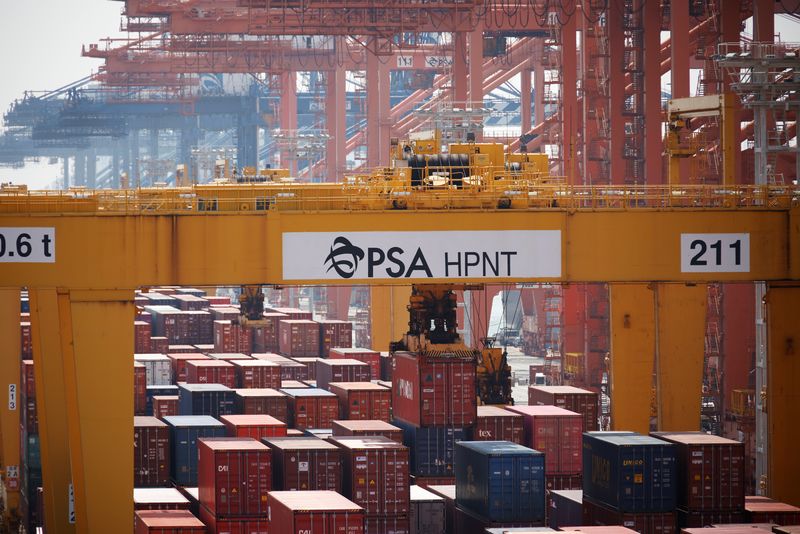
By Jihoon Lee and Cynthia Kim
SEOUL (Reuters) -South Korea's exports beat expectations and accelerated in November as overseas sales of chips rose for the first time in 16 months, adding to evidence global demand is strengthening.
Exports by Asia's fourth-largest economy gained 7.8% year-on-year to $55.80 billion, speeding up from a rise of 5.1% a month before to mark the fastest growth since July 2022 and also beating a 4.7% gain in a Reuters poll of economist forecasts.
Chips exports snapped 15 months of declines and rose 12.9%, in an indication that the slump in semiconductor demand may be bottoming out.
"Exports are surely rebounding thanks to a recovery in chip demand. Car sales are also strong, so we expect overall exports to post a growth of 8% next year," said Lee Da Eun, an economist at Daishin Securities.
"Having said that, momentum behind chip sales isn't as strong as we had expected and there is also downside risks from tepid recovery of the Chinese economy."
South Korean policymakers are pinning hopes on a revival of chip demand to boost growth as restrictive interest rates at home restrain domestic demand.
On Thursday, the Bank of Korea kept monetary policy unchanged and signaled it may need to keep interest rates higher for longer to head off persistent inflation risks.
By destination, exports to the United States jumped 24.7% to log a fourth consecutive month of gains, but shipments to China, its biggest trading partner, declined 0.2%.
Imports fell 11.6% to $52.0 billion, compared with losses of 9.7% the month before and 8.6% expected by economists.
As a result, the country posted a trade surplus of $3.80 billion in November. It was the biggest monthly surplus since September 2021.
Exports for 12 of the country's 15 main export items increased in November, including a 38.5% surge in ship exports. Car exports jumped 21.5%, extending gains to a 17th consecutive month.
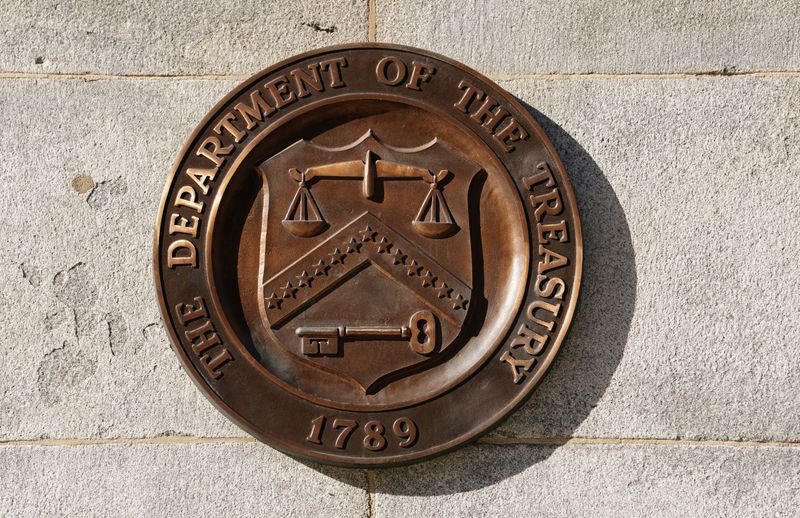
WASHINGTON (Reuters) - The United States on Thursday targeted North Korea with fresh sanctions after its launch of a spy satellite last week, designating foreign-based agents it accused of facilitating sanctions evasion, including revenue and technology for its weapons of mass destruction program.
The U.S. Treasury Department in a statement said it also slapped sanctions on cyber espionage group Kimsuky, accusing it of gathering intelligence to support North Korea's strategic and nuclear ambitions.
Thursday's action, taken in coordination with Australia, Japan and Korea, comes after North Korea last week successfully launched its first reconnaissance satellite, which it has said was designed to monitor U.S. and South Korean military movements.
"Today's actions by the United States, Australia, Japan, and the Republic of Korea reflect our collective commitment to contesting Pyongyang's illicit and destabilizing activities," Treasury's Under Secretary for Terrorism and Financial Intelligence, Brian Nelson, said in the statement.
"We will remain focused on targeting these key nodes in the DPRK's illicit revenue generation and weapons proliferation," Nelson added, calling North Korea by the initials of its official name, the Democratic People's Republic of Korea.
North Korea's mission to the United Nations in New York did not immediately respond to a request for comment on Thursday's sanctions.
Since the launch of the satellite, North Korea said that its leader, Kim Jong Un, has reviewed spy satellite photos of the White House, Pentagon and U.S. aircraft carriers at the naval base of Norfolk. Its state media has also reported that the satellite photographed cities and military bases in South Korea, Guam, and Italy, in addition to Washington.
On Monday, the United Nations ambassadors of the United States and North Korea sparred at the Security Council over the launch and the reasons for growing tensions in a rare, direct, public exchange between the adversaries.
Thursday's action freezes any U.S. assets of those targeted and generally bars Americans from dealing with them. Those who engage in certain transactions with them also risk being hit with sanctions.
The Treasury said Kimsuky primarily uses spear-phishing to target people employed by the government, research centers, academic institutions and others, including in Europe, Japan, Russia, South Korea and the United States.
In October 2020, the U.S. Cybersecurity and Infrastructure Agency (CISA) described the group as "likely tasked by the North Korean regime with a global intelligence gathering mission."
Security researchers have found the group impersonating reporters to trick targets into downloading malicious software to spy on them. Kimsuky's hacking operation has been historically focused on South Korea, Japan and the United States.
In June, the U.S. National Security Agency said the hackers, which have been operating since at least 2012, were "subordinate to an element within North Korea's Reconnaissance General Bureau (RGB)." The RGB is a North Korean intelligence agency that is involved in cyber warfare activities, according to analysts, and is under U.S. sanctions.
Also targeted on Thursday were Iran and China-based representatives of U.S. and UN-designated Green Pine, which the Treasury said is responsible for half of North Korea's arms and related materiel exports.
Two Russia-based representatives of North Korean banks and one China-based representative were also hit with sanctions, among others.

By Naomi Rovnick
LONDON (Reuters) - November has shaped up to be a fairytale month for equities, with the festive Santa rally investors traditionally hope for coming early as traders bet on a Goldilocks scenario of inflation falling and central banks lowering interest rates.
MSCI's world stock index is set to close the month up around 9%, its best performance since November 2020, when markets cheered the arrival of COVID-19 vaccines.
Easing inflation has boosted talk that the U.S. Federal Reserve, the European Central Bank and others are done with aggressive rate hikes, lifting bond and stocks while hurting the dollar.
Global bond prices have soared, with an ICE BofA index of global investment-grade bonds in major markets set to return 3.4% in November, the best month on record going back to 1997..
Yields on U.S. Treasuries, which move in the opposite direction to prices, are set for the biggest monthly drop since 2008.
That's taken the sting out of a summer bond rout, while major stock markets are on track to reverse 2023's sharp falls.
But there's a caveat, warn investors, cautioning that equities could be ignoring the recession risks that typically bode well for safe-haven government debt.
"The equity market is too optimistic right now and bond markets have it right," said Altaf Kassam, head of investment strategy and research, EMEA, for State Street (NYSE:STT) Global Advisors.
"There is still room for interest rates to come down and disinflation to continue but we think for that to happen growth will also slow down and the lagged effect of monetary tightening will come."
BROAD BASED
November's equity rally has been broad based, with Wall Street's S&P 500 8.6% higher on the month and Europe's Stoxx 600 index adding 6%. Global growth stocks in high-tech sectors are up 11% while value stocks, which are mainly in cyclical industries and offer high dividends, have gained 6.5%.
Major central banks have jacked up rates by a hefty 3,965 bps since late 2021 and investors sense a peak has been reached.
Traders are already pricing roughly 100 bps of Fed and ECB rate cuts next year while most big economies have paused rate rises to see how much the tightening bites.
"We've now had this rebound (in equities) and what we need to see is tangible supporting evidence that this is not a head fake policy pivot," said Zurich Insurance Group (OTC:ZFSVF) chief market strategist Guy Miller.
Joost Van Leenders, senior investment strategist at Dutch bank Van Lanschot Kempen, said he expected U.S. and European equities to fall from here as monetary tightening impacts the economy.
U.S. home sales slumped to a 13-year low in October, euro zone bank lending to businesses fell by the first time since 2015 last month as a recession in the bloc looms, while China's economic performance remains weak.
Equity markets are also ignoring the downside of lower inflation, Van Leenders said, because companies that have passed on higher prices to customers have achieved higher nominal growth in revenues and profits.
"It's all the more difficult (for company earnings) when inflation is falling," he said.
And a cloudier outlook for stocks suggests a divergence could open up between again between stocks and bonds.
Until recently eyeing a third year of straight losses, November's rally means government bonds have eked out a 0.7% positive annual return.. The broader global index is set to return 1.6% for the year.
Asset managers had expected a good year for bonds, a scenario that failed to materialise as rates rose further and government and consumer spending buoyed the U.S. economy.
Van Leenders said he expected further gradual falls for Treasury yields. Ten-year Treasury yields, trading at 4.2%, are down from a peak above 5% hit in October. Germany's benchmark Bund yield too has pulled back from recent highs above 3%.
"We're looking for softness in the U.S. next year," State Street's Kassam said. "And on balance we prefer fixed income right now because the lack of growth is what's going to keep equities in check."

By Kane Wu
HONG KONG (Reuters) -Asian stocks rose on Thursday to clock their strongest performance in 10 months, as investor sentiment warmed on a relatively benign global interest rates outlook and signs of economic recovery.
Europe and Wall Street are also set to open higher with FTSE futures and E-mini futures for the S&P 500 index up about 0.1% each.
The MSCI Asia-ex-Japan stocks index was up 0.1% at 0507 GMT, gaining 6.9% so far this month, setting it on course to mark the best month since January.
South Korea's KOSPI has led the rally in Asia with 10.6% gains this month, followed closely by Taiwan and Japan's Nikkei.
"Seems market participants are clearly taking the no landing and Fed done scenario to heart. Modest China domestic stimulus is having a positive effect," said John Milroy, an investment adviser at Ord Minnett in Sydney.
"Inflation prints and bond markets suggesting the central banks are at least due a pause in the raising cycle. Markets like that."
Hong Kong's Hang Seng Index pared losses to be up 0.1%, while China's benchmark CSI300 Index rose as much as 0.24%, despite disappointing Chinese manufacturing data released on Thursday.
The closely watched factory survey showed manufacturing activity contracted for a second straight month in November and at a quicker pace, suggesting more government support is needed to help shore up growth in the world's second-largest economy.
For the month, the Hang Seng has lost half a percentage point while CSI300 was down over 2%.
Stock markets around the world struggled on Wednesday, after a strong month driven by market expectations of peak Federal Reserve rates, and as a fall in the dollar and in U.S. bond yields loosened financial conditions.
Ten-year U.S. yields are down more than 60 basis points in November, on track for the steepest monthly drop since late 2008.
While U.S. central bank officials on Wednesday sent mixed messages, investors still focused on comments made on Tuesday by Fed Governor Christopher Waller, an influential and previously hawkish voice at the bank. Waller had said rate cuts could begin in months if inflation keeps easing.
Meanwhile, data from the U.S. showed a strong economy in the third quarter and also a downtrend in inflation, reinforcing expectations the Fed might cut interest rates earlier than expected.
"We think liquidity and momentum can still support markets through December," said Redmond Wong, market strategist, Greater China at Saxo Markets, and that rate cuts could be as early as the first quarter as U.S. economy has shown signs of deceleration.
The U.S. personal consumption expenditure inflation report will be released on Thursday.
Fed Chair Powell is also due to speak on Friday and expected to offer crucial insights into the Fed's policy approach ahead of their December meeting.
U.S. financial conditions are the loosest since early September and have eased 100 basis points in a month, according to Goldman Sachs. The bank's global and emerging market indexes ticked up a bit last week, but financial conditions are also looser by around 100 bps from a month ago. U.S. rates futures markets are now pricing in more than 100 basis points of rate cuts next year starting in May, and the two-year Treasury yield is its lowest since July - it has slumped nearly 40 basis points this week alone.
"Absent rapid Fed easing, we expect a more challenging macro backdrop for stocks next year with softening consumer trends at a time when investor positioning and sentiment have mostly reversed," analysts at J.P.Morgan said in a note on their 2024 global outlook.
"Equities are now richly valued with volatility near the historical low, while geopolitical and political risks remain elevated. We expect lackluster global earnings growth with downside for equities from current levels."
Oil prices traded steadily after rising more than $1 on Wednesday ahead of expected production cuts by the OPEC+ group.
U.S. crude pared losses to gain 0.23% to $78.04 per barrel and Brent was down 0.18% at $82.95.
Spot gold slid 0.04% to $2,043.69 an ounce.

By Joe Cash
BEIJING (Reuters) -China's manufacturing activity shrank for a second straight month in November and at a quicker pace, suggesting more stimulus will be needed to shore up economic growth and restore confidence that the authorities can ably support industry.
Economists upgraded their forecasts for the world's second-largest economy after better-than-expected third quarter data, but despite a flurry of policy support measures, negative sentiment among factory managers appears to have become entrenched in the face of weak demand both at home and abroad.
The official purchasing managers' index (PMI) fell to 49.4 in November from 49.5 in October, National Bureau of Statistics data showed on Thursday, missing economists' forecast of 49.7. The 50-point mark demarcates contraction from expansion.
"The domestic market cannot make up for losses in Europe and the United States. The data shows that factories are producing less and hiring fewer people," said Dan Wang, chief economist at Hang Seng Bank China.
"(The data) could also show a loss of confidence in government policy," she added, warning factory activity was unlikely to improve anytime soon as other economic problems dominate. "The priority now is clearly containing the local government debt risk and the risk posed by regional banks."
The new orders sub-index contracted for a second consecutive month, while the new export orders component extended its decline for a ninth month.
In another worrying sign, the vast services sector contracted for the first time in 12 months. The non-manufacturing PMI, which includes services and construction, eased to 50.2 in November from 50.6 last month.
China's economy has struggled this year to mount a strong post-pandemic recovery, held back by a deepening crisis in the property market, local government debt risks, slow global growth and geopolitical tensions.
The factory PMI has contracted for seven out of the past eight months - rising above the 50-point mark only in September. The last time the indicator was negative for more than three consecutive months was in the six months to October 2019.
"The hard data have held up better than the survey-based measures lately... (which) may be overstating the extent of slowdown due to sentiment effects," Sheana Yue, China economist at Capital Economics, said in a note.
"But if that starts to change, policy support will need to be ramped up further to prevent the economy from backsliding."
The patchy recovery has prompted many analysts to warn that China may decline into Japanese-style stagnation later this decade unless policymakers take steps to reorient the economy towards household consumption and market-allocation of resources.
"Today's PMI reading will further raise expectations towards policy support," said Zhou Hao, economist at Guotai Junan International. "Fiscal policy will be under the spotlight and take centre stage over the coming year and will be closely monitored by the market."
Oil prices fell in early Asia following weaker-than-expected manufacturing activity in China, the world's largest energy consumer, while the offshore yuan also slipped.
MORE SUPPORT NEEDED
China's central bank governor on Tuesday said he was "confident that China will enjoy healthy and sustainable growth in 2024 and beyond," but urged structural reforms to reduce reliance on infrastructure and property for growth.
Policy advisers say the government will need to implement further stimulus should it wish to sustain an annual economic growth target of "around 5%" next year, which would match this year's goal.
But the People's Bank of China (PBOC) is constrained when it comes to implementing further monetary stimulus over concerns a widening interest rate differential with the West may weaken the currency and spur capital outflows.
In October, China unveiled a plan to issue 1 trillion yuan ($138.7 billion) in sovereign bonds by the end of the year, raising the 2023 budget deficit target to 3.8% of GDP from the original 3%.
The PBOC has also implemented modest interest rate cuts and pumped more cash into the economy in recent months, pledging to sustain policy support.
China still channels more funds into infrastructure projects to drive growth, which likely lifted the construction index to 55.0 from 53.5 in October, though the government has been trying to reduce the economy's reliance on property.
"Despite the raft of stimulus measures announced over the past several months, we believe it is still too early to call the bottom," Ting Lu, chief China economist at Nomura, said in a note. "We expect another economic dip towards end-2023 and spring 2024."
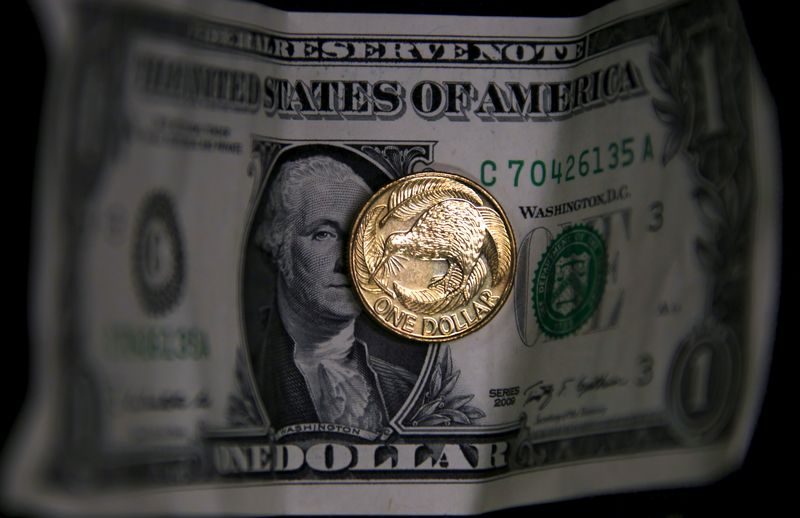
SINGAPORE (Reuters) - The dollar was rooted near a three-month low on Thursday and was set to post its steepest monthly decline in a year as investors ramped up bets that the Federal Reserve is done with rate hikes ahead of a crucial inflation report later in the day.
The dollar index, which measures U.S. currency against six rivals, eased 0.058% to 102.74, not far from 102.46 - its lowest since Aug. 10 it touched on Wednesday.
The index is down 3.7% in November on growing expectations the Fed will cut interest rates in the first half of 2024.
The dollar clawed back some of its losses on Wednesday after data showed the U.S. economy grew faster in the third quarter than initially reported.
"I think it's still pretty much all about U.S. yields. And by extension FOMC policy," said Carol Kong, currency strategist at Commonwealth Bank of Australia (OTC:CMWAY).
"Markets will continue to play to focus on what FOMC officials say about the prospect of the upcoming rate-hike cycle."
Investor focus will be on comments from Fed Chair Jerome Powell, who is due to speak on Friday in the wake Fed Governor Christopher Waller on Tuesday flagging a possible rate cut in the months ahead.
But before that, spotlight will be on Thursday's crucial personal consumption expenditure (PCE) inflation report.
Christopher Wong, currency strategist at OCBC, said the data will offer a glimpse into whether the disinflation trend seen so far remains intact. "If core PCE undershoots expectations to the downside, then USD may extend the move lower again."
U.S. financial conditions are the loosest since early September and have eased 100 basis points (bps) in a month, according to Goldman Sachs. The bank's global and emerging market indexes ticked up a bit last week, but financial conditions are also looser by around 100 bps from a month ago.
U.S. rates futures markets are now pricing in more than 100 basis points of rate cuts next year starting in May, and the two-year Treasury yield is its lowest since July - it has slumped nearly 40 basis points this week alone. [US/]
The weakness in the dollar has allowed most Asian and regional currencies to take advantage. Two of the best-performers are at the polar opposite ends of the 'carry' spectrum - the New Zealand dollar and Japanese yen.
The kiwi got an extra boost on Wednesday following the central bank's 'hawkish hold' - policymakers kept the key cash rate at a relatively high 5.50%, but unexpectedly signalled that it could be raised again if inflation doesn't moderate.
The currency was 0.26% higher at $0.6172, staying close to the four month peak of $0.6207 it touched on Wednesday.
Meanwhile, expectations that the Bank of Japan will soon end its negative rate policy has pulled the yen up from the depths, and in the process, eased pressure on the central bank to support the currency via direct FX market intervention.
On Thursday, yen strengthened 0.09% to 147.11 per dollar, remaining close to two and half month high of 146.675 per dollar it touched on Wednesday.
Sterling was last at $1.2695, up 0.01% on the day, while the euro was up 0.06% at $1.0975. The Australian dollar rose 0.08% to $0.6623.
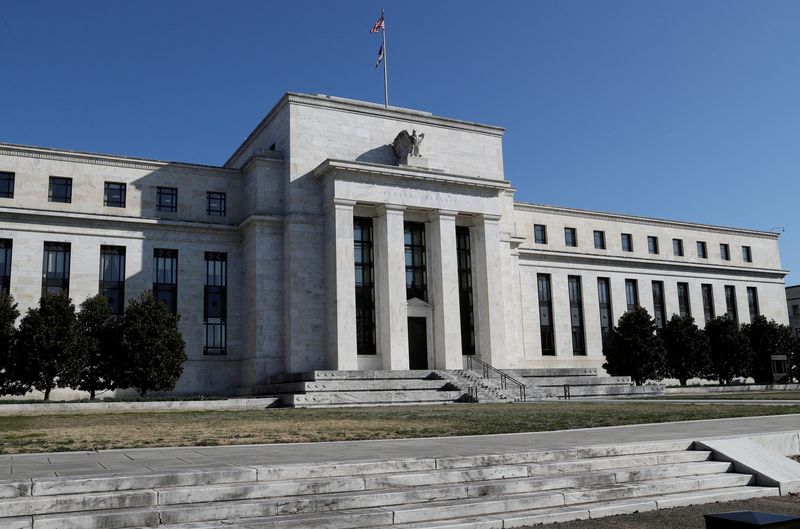
(Reuters) - U.S. economic activity slowed from early October through the middle of November, while businesses reported inflation largely moderated and it was easier to hire workers, the Federal Reserve said in a report on Wednesday, underscoring waning economic momentum into the tail end of the year.
The U.S. central bank released its latest temperature check on the state of the economy a day after Fed Governor Christopher Waller, an influential voice on its policy-setting committee, flagged that current progress on lowering inflation means the possibility of a reduction in the Fed's benchmark overnight lending rate next year is coming into view.
"Economic activity slowed since the previous report, with four districts reporting modest growth, two indicating conditions were flat to slightly down, and six noting slight declines in activity," the Fed said in its survey, known as the "Beige Book," which polled business contacts across the central bank's 12 districts through Nov. 17. "The economic outlook for the next six to twelve months diminished over the reporting period."
The Fed kept its policy rate unchanged in the 5.25%-5.50% range earlier this month for the second consecutive meeting after ramping up borrowing costs by more than 5 percentage points over the past 20 months to quell high inflation. The Fed is seeking to weaken the economy just enough to bring inflation down without causing a recession.
The four Fed districts reporting growth were Dallas, Richmond, Atlanta and Chicago. Most districts said growth was down, with the Kansas City Fed reporting consumers increasingly likely to "share a roof and share meals" to manage household budgets, and contacts in the San Francisco Fed district expressing concern over a weaker economic outlook and increased overall uncertainty.
PRICE PRESSURES
Investors expect Fed policymakers to stand pat again at the Dec. 12-13 policy meeting, given the progress made in returning inflation to the central bank's 2% target rate and the fact that it will take more time for the full impact of the rise in its policy rate to filter through the economy.
By the Fed's preferred measure, inflation in September was running at a 3.4% annual rate, down from the 7.1% peak reached in June of last year when pandemic-induced goods and labor supply shortages juiced price pressures. New inflation data is scheduled to be released on Thursday.
There were some hints in the survey that firms are finding it harder to raise prices, potentially an important signal for policymakers on the hunt for signs of further cooling in inflation. "Some firms noted that pricing power was reduced by weakening demand and competition," the Cleveland Fed reported.
The Dallas Fed noted that price pressures were above average in the service sector, but modest in other sectors, adding that "outlooks worsened ... with numerous contacts citing geopolitical instability and high interest rates as headwinds."
The economy grew faster than initially thought in the third quarter, government data showed earlier on Wednesday, but activity appears to have since moderated as higher borrowing costs dampen hiring and spending.
A separate gauge of consumer prices was flat in October, retail spending has weakened, and there has been a slow easing in wage growth, although the labor market still remains tight.
The mixed picture on the labor market featured in the Fed's latest survey, with demand for labor continuing to ease and "flat to modest" increases in overall employment.
Some employers reported feeling comfortable letting go low performers, although "several districts continued to describe labor markets as tight with skilled workers in short supply."
Wage growth remained modest to moderate in most Fed districts, the report said, although some wage pressures did persist.
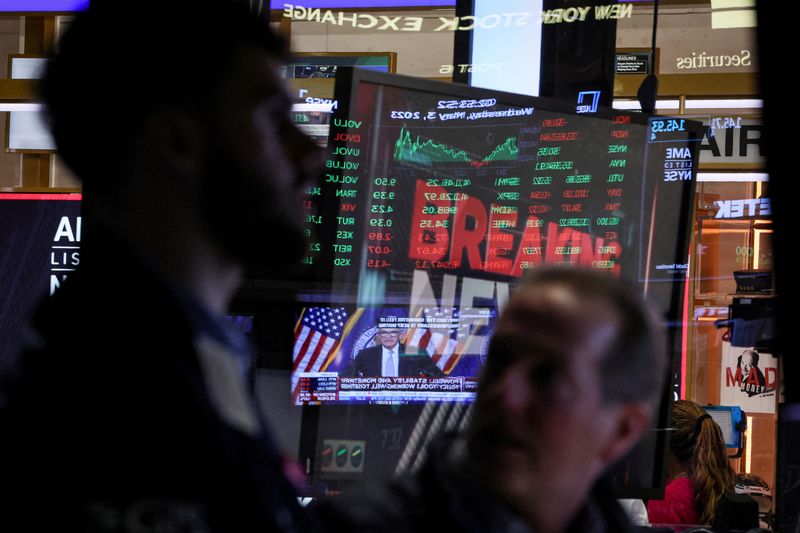
By Mike Dolan
LONDON (Reuters) - With a rosy picture of stock and bond gains next year now the running consensus, forecasters are managing an impressive leap of faith over three main assumptions - soft economic landings, hefty interest rate cuts and above-target inflation.
Too good to be true?
Soft landings - at least in the broadest sense that may include moderate recession - seem a high bar after two years of brutal credit tightening. And yet, a holy grail for policymakers, such an outcome is now the glue that binds the upbeat forecasts and represents majority thinking among investors.
But perhaps the greater epiphany in annual outlooks is the idea that central banks will be easing rates substantially through the year even with inflation still above 2% goals.
Disinflation, but really not of the immaculate sort - as the now-tired jibe runs.
For Europe's biggest asset manager Amundi, for example, U.S. and euro inflation will stay at 2.6% through next year - and remain above 2% in 2025. But it still thinks the Federal Reserve and European Central Bank will chop more than 100 basis points off rates in 2024 regardless.
"Inflation will remain just above targets, but the central banks will tolerate that outcome and start to ease anyway," Amundi chief investment officer Vincent Mortier told reporters.
Deutsche Bank sees U.S. inflation a bit lower at 2.1% next year, but still above target despite a forecast 'mild' recession - and it sees the Fed slashing rates by a whopping 175bps by the end of 2024.
There is of course an intensely-debated and nuanced take on ebbing momentum in core inflation - a sense that post-pandemic supply-side bottlenecks are easing at last and expectations remain sufficiently in check to allow central banks to reverse.
What's more, central banks can dial back borrowing rates but still leave them in relatively 'restrictive' territory above long-term averages for longer, as per their new-found mantra.
And yet long-term market inflation expectations concur with the view that central banks may - quietly perhaps - just agree to live with slightly above-target inflation even as they insist otherwise - in part as a trade off for dodging painful recession.
While relatively well behaved through the recent two-year inflation spike, five and 10-year inflation expectations embedded in the inflation-linked bond markets remain at 2.2-2.3%. Five-year, five-year forward inflation-linked swaps are as high as 2.55%.
The most recent Reuters poll of economists showed all 100 surveyed expect all the main measures of headline and core U.S. inflation to remain above 2% at least until 2025.
And yet, 90% said the Fed was done hiking and almost 60% expected cuts to commence by midyear. In fact, almost a fifth of banks surveyed expect U.S. policy rates to be cut to below 4.0% by next December from the current 5.25-5.50%.
FIGHTING THE FED?
To be sure, Fed policymakers themselves don't see inflation back to target next year either - with their median core PCE gauge projection from the most recent quarterly forecasts at 2.6% through next year and still at 2.3% in 2025.
But neither has the Fed, rhetorically at least, taken another hike off the table yet and is only projecting one quarter-point rate cut at most by the end of 2024.
So what gives? Will almost sacrosanct central bank commitment to getting back to a promised land of 2% or lower inflation just be fudged at the last moment and quietly set aside?
Goldman Sachs' U.S. economist Jan Hatzius trumpets success in supply-side dynamics that will rein central bank hawks, pointing to the fact that job openings have fallen without a significant rise in joblessness - as the so-called 'Beveridge curve' might have suggested - and allowing wage growth to ease back without a major recession.
"Last year's disinflation does indeed have further to run," he said, characterising core inflation rates of 2-2.5% being 'broadly consistent' with targets but also seeing just one quarter point rate cut next year.
"The most novel reason for optimism on growth is that because central banks don't need a recession to bring inflation down, they will try hard to avoid one," Hatzius wrote.
And while Goldman may be one of the more cautious houses on the policy rate view, it's this hoped-for Fed pivot to the second of its mandates - to maximise employment - that likely encourages investors to look through rhetoric on a strict target.
Harking back to the banking crash and recession of 2008, economists David Blanchflower - a former Bank of England policymaker - and Alex Bryson studied the best leading indicators of an oncoming recession and pointed out how Fed policymakers were wide of the mark 15 years ago.
Fed meeting minutes from August 2008 suggested the central bank's next move was likely to be tightening - a month before Lehman Brothers crashed, forcing the Fed to slash rates again to 0.25% from 2% and launch an unprecedented bond buying campaign.
What's more, recent renewed buzz around the so-called 'Sahm Rule' as a real-time U.S. recession indicator is well founded judging by history, Blanchflower and Bryson say, and may be a better guide to a pivot than Fed statements.
Developed by Fed economist Claudia Sahm before the pandemic as a potential rule of thumb for triggering benefit payments, the formula suggests recession is underway when the three-month rolling average of the unemployment rate rises half a point above the low of the prior 12 months.
Right now, it's running as high as 0.33 point - its highest in 2-1/2 years and up from near zero just six months ago.
If the Fed's watching this as closely as markets seem to be now, then next week's November payrolls report may be an even bigger deal than usual and go some way to explaining some of the more aggressive rate cuts being pencilled in for next year.
The opinions expressed here are those of the author, a columnist for Reuters
(By Mike Dolan; Editing by Susan Fenton)

